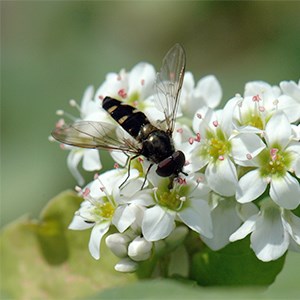Contact
mattias.jonsson@slu.se, 018 - 67 2450

Planting flower strips and hedgerows close to crop fields is meant to increase biodiversity and ecosystem services such as pest control and pollination. In a global synthesis an international research team found that flower strips enhanced pest control services in adjacent crop fields by 16% on average. Effects on pollination were more variable.
One of our biggest challenge is meeting the increasing demands for agricultural products and at the same time minimize the negative impacts of agriculture. Our intensive agricultural production and the fact that crops are often grown in monocultures is threatening farmland biodiversity and the associated ecosystem services across the world.
One way to increase biodiversity and ecosystem services is to plant flowers and hedgerows close to the agricultural fields.
– These flower strips and hedgerows are usually planted at the edge of the crop field. They offer resources for pollinators and natural enemies of crop pests such as food, shelter and overwintering opportunities, says Riccardo Bommarco, one of the authors behind the study.
It has been debated how effective these plantings are for enhancing ecosystem services and crop yield globally. Therefore, an international research team from 27 different research institutes and universities set out to investigate this. They by gathered and analysed a dataset of 529 sites in North American, European and New Zealand.
– We found that flower strips, but not hedgerows, enhanced pest control services in adjacent crop fields by 16% on average. No consistent impacts of flower strips on crop yield could however be detected. This means that we need to optimize the plantings to get even more benefits. In an ongoing project we are trying to optimize flower strips for Swedish conditions by selecting the best flowers, says Mattias Jonsson, another author behind the study.
The effect of flower strips and hedgerows on pollination was more variable. Pollination services declined exponentially the more distant they were from flower strips and hedgerows. However, perennial and older flower strips with higher flowering plant diversity were more effective in enhancing pollination, indicating that flower strips need to be established for some time before positive effect on pollinators kick in.
mattias.jonsson@slu.se, 018 - 67 2450